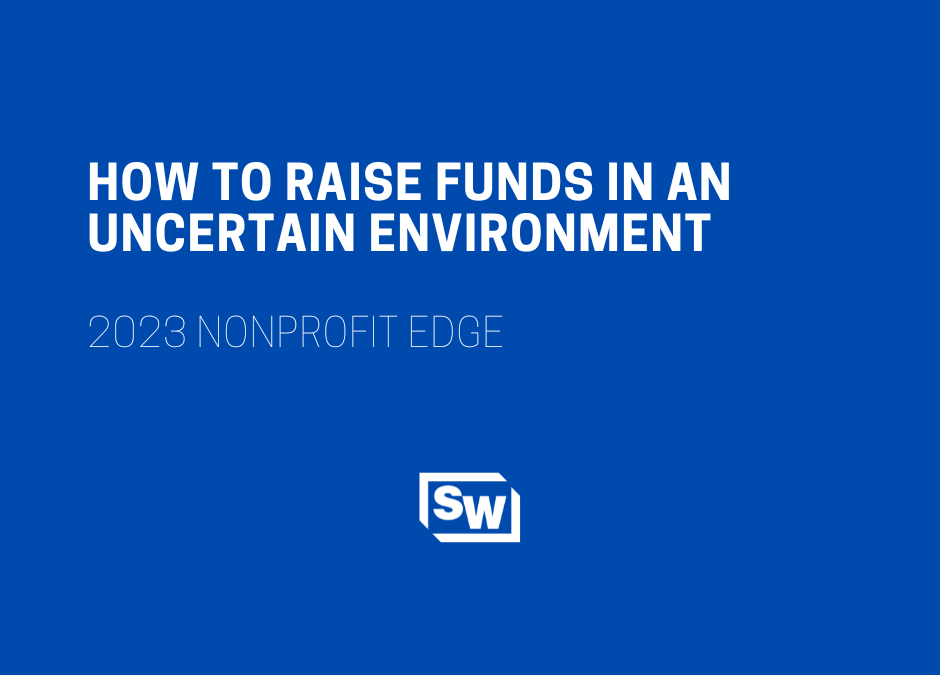While the global pandemic brought many hardships, it also encouraged a great deal of generosity. 2020 and 2021 were two of the strongest giving years on record, but now we enter a new, post-pandemic era with great economic uncertainty. 2022 saw decreases in overall giving, and when we consider inflation, the total decrease in charitable giving was 10.5%.
On average, individuals only donate 1.7% of their disposable income, which is at a historical low that we haven’t seen since 1995. When accounting for inflation, total donations from individuals have dropped 13.4% from last year. Historically, donations directly from individuals have accounted for at least 70% of all donations in the country, but that has not been the case since 2018, and as of 2022, total donations from individuals comprise 64% of all charitable donations given.
There is no magic wand to fix this economy’s impact on charitable giving, but we can share some strategies to help you get through this time.
Look at Other Pieces of the Pie These numbers might appear alarming, but it’s important to remember that these are not permanent. While there are periods of growth and decline over time, overall donations are still trending upward when looking at the donation patterns over the past four decades. We now see other donors, such as bequests and foundations, becoming bigger participants and contributing more.
Pursue the Grants The largest increase in total charitable giving has occurred in the field of grants made by foundations, such as independent, community, and operating foundations. Historically, grants and donations from foundations had a similar share of total donations given as those from businesses and bequests (approximately 7% of all charitable giving, each). As of 2022, grants from foundations now account for 19% of all charitable giving. More grants are becoming available, and more grants are being given to charitable organizations than have been in the past.
Grow Relationships with Businesses As new businesses are being created and more profits are being made, charitable organizations can place an emphasis on their relationships and partnerships with local businesses. Corporate organizations have increased total amounts given over the years (increased by 3.4% from 2021 to 2022, before considering inflation). Consider different ways to work with or attract local businesses to your organization to take advantage of this growing trend of more corporate participation in charitable giving.
Trends in Individual Giving: Bequests Bequests, separate from individual giving, is a growing share of all charitable donations. This trend is worth noting because these bequests first start with individuals who set up a planned giving strategy for donations after they pass away. Strategies, like planned giving and giving through bequests, can help those who might not have the income to donate now but can donate later. Many individuals, even with currently limited disposable income, might have assets, such as their home, which could be worth hundreds of thousands of dollars, that they might be happy to donate to a nonprofit organization as that could be their opportunity to make a big impact. Planned giving will involve your donors working with professionals like attorneys,
financial planners, and accountants.
Trends in Individual Giving: Donor-Advised Funds Donor-Advised Funds (DAF) are becoming a more frequently used financial planning vehicle by individuals. In 2017, a total of $19.72 billion of grants were donated through DAFs. This amount increased to $45.74 billion in 2021. DAFs tend to be an easier, more affordable, and more convenient option for donors who want to be charitable with their accumulated earnings. Consider expanding your donor database in some way to learn who does and does not have a DAF. Donors often set up these funds through financial planners, as many investment vehicles now offer them as an option for their investors.
Emphasis on the Donors A study has shown positive feelings associated with a charity creates longer relationships and potentially larger donations overall. Let your donors know how generous, kind, thoughtful, and caring they are. Remind them that your impact is made as a result of their generosity. Changing the language in your communication to emphasize these characteristics and the donor’s impact can make a difference in what your donors are willing to give. One organization even saw an increase of over $1 million over the course of a few years just by changing the language they used in their communications to emphasize these qualities. That same study also emphasizes that donors are more willing to consistently donate to your organization if they feel connected to the services you provide, the needs you meet, or just the overall impact you have on certain groups or communities.
Key Take Aways
1. Be an educator. Donors might not be aware of these opportunities. Take time to point out the various methods donors have to give, such as DAFs or planned giving.
2. Be a connector. It is not your job to know everything there is about these financial planning methods. Connect with professionals, such as attorneys, financial planners, and accountants, who can be a resource to your donors or your organization.
3. Know your donors. How do your donors connect to your organization? Focus on those connections with the donors who share those same values.
4. Stay up to date. Articles like these can help you stay up to date on trends, but maintaining your donor database, such as noting which donors have a DAF or how they connect to your organization, is best done by you.
5. Be financially agile. As the times change, your strategies may need to change to accomplish your goals. You might have focused only on donations from individuals, but it might be beneficial to start expanding to corporate relations or pursuing grants.
By David Jacobson

